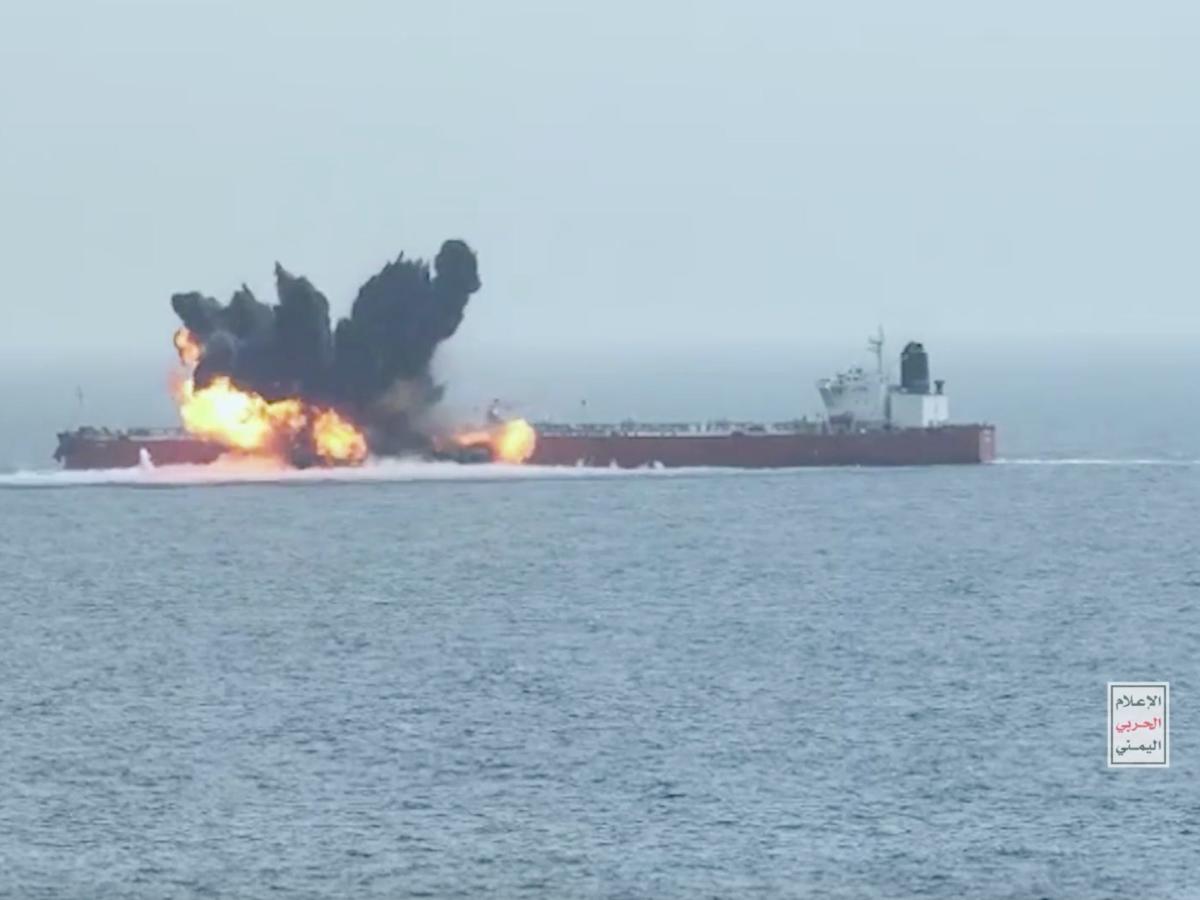
-
The Houthis shared a video of a claimed sea drone strike on a crude oil tanker in the Red Sea.
-
A spokesperson for the Yemeni Armed Forces said the vessel had violated its entry ban.
-
The Iran-backed rebel group has become more adept at targeting commercial vessels, experts told BI.
Yemen’s Houthi rebel group shared a video of what it claimed was one of its sea drones striking a crude oil tanker in the Red Sea.
In an X post on Tuesday, Ameen Hayyan, the director of the Yemeni Armed Forces Spokesperson’s Office, said it had targeted the Chios Lion on Monday.
The Yemeni Military Media, or MMY, also published the video on its website, saying that it showed the MT Chios Lion being targeted by a drone.
Hayyan said the vessel was struck because the company that owns it violated its decision to ban entry into the “ports of occupied Palestine.”
Footage of the alleged sea drone attack shows a blurred vessel approaching the front of the Chios Lion and exploding on impact.
US Central Command, or CENTCOM, reported on the attack on Monday, saying the Houthis attacked the Liberian-flagged, Marshall Islands-owned, and Greek-operated crude oil tanker with an unmanned surface vehicle in the Red Sea, causing damage to the vessel.
It said the Houthis also launched multiple attacks on the MT Bentley I, a Panama-flagged, Israel-owned, Monaco-operated tanker vessel, using one USV, two small boats, and an anti-ship ballistic missile.
It said no damage or injuries were reported related to that vessel.
The Houthis have used naval drones in a string of recent attacks on commercial shipping in the Red Sea.
The Houthis have characterized their campaign as a response to the Israel-Hamas war, but they are also attempting to position themselves as a big player in Iran’s proxy network.
The Iranian-backed group scored its first hit with a naval drone in June, striking the M/V Tutor, a Liberian-flagged, Greek-owned bulk carrier, CENTCOM reported at the time.
Since then, it has ramped up its attacks, deploying one or more sea drones almost every day last week. CENTCOM said its forces destroyed all of those drones.
Between October and April, the Houthis carried out at least 53 attacks on commercial vessels, the US Department of Transportation and Maritime Administration reported in April.
And between December and March, Houthi attacks damaged at least 19 commercial ships, according to a June 13 report published by the Defense Intelligence Agency.
Experts told BI last month that the spike in successful attacks was proof that the Houthis were picking up lessons from their monthslong campaign of attacks on maritime lanes in the Red Sea and Gulf of Aden, and that Iran, their primary military and financial backer, was still supporting them.
“Every single Houthi attack, the Houthis are probably learning something about what works and what doesn’t,” Brian Carter, the Salafi-Jihadism team lead and an analyst at the American Enterprise Institute’s Critical Threats Project, told BI.
“If you think about how a military organization operates, they’re definitely taking away lessons from the different strike packages that they’re using,” he added.
Following the attacks on Monday, Yahya Sare’e, a spokesperson for the Yemeni Armed Forces, said in a statement that the operations will not stop “unless the aggression is stopped and the siege on the Palestinian people is lifted in Gaza.”
Read the original article on Business Insider
EMEA Tribune is not involved in this news article, it is taken from our partners and or from the News Agencies. Copyright and Credit go to the News Agencies, email news@emeatribune.com Follow our WhatsApp verified Channel





